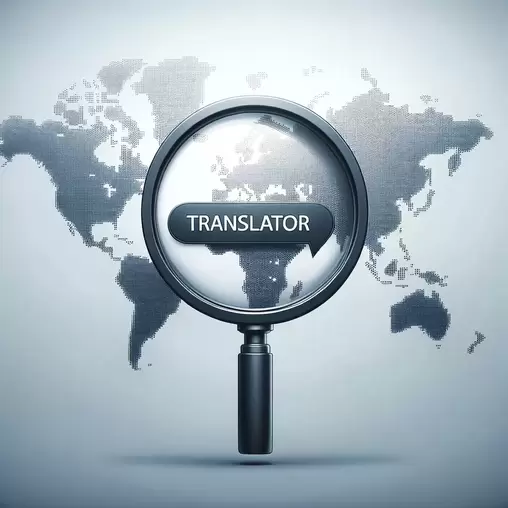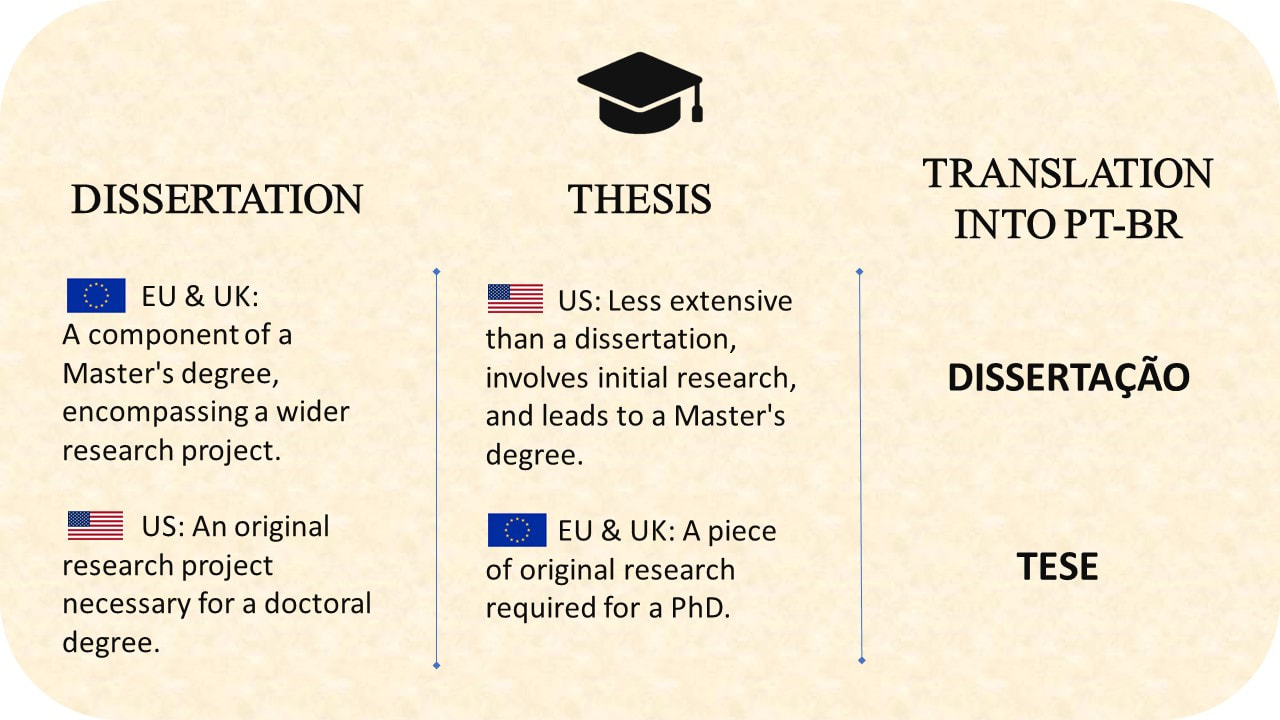|
In our increasingly interconnected world, effectively communicating across languages is crucial. Whether it's sharing information, marketing products, or building global communities, the way we bridge the linguistic gap holds immense power. This is where three key concepts come into play: translation, localization, and transcreation. While often used interchangeably, these processes have distinct purposes and applications. This article delves into the differences between translation, localization, and transcreation, providing a clear understanding of each approach and its ideal use case. Translation: The Foundation of Communication
Translation is the most fundamental process, focusing on conveying the exact meaning of a text from one language (source language) to another (target language). A skilled translator ensures the accuracy and fluency of the translated content, preserving the core message and intent of the original piece. Here are some key aspects of translation:
Common applications of translation include:
Localization: Going Beyond Words Localization builds upon translation, taking cultural context and regional preferences into account. It aims to adapt content to resonate with a specific target audience in a particular locale. Here's what sets localization apart:
Localization is crucial for a seamless user experience in different regions. Here are some examples:
Transcreation: The Art of Reimagining Transcreation is the most creative of the three processes. It involves not just translating the words, but also reimagining the message to resonate with a new audience. Transcreators aim to evoke the same emotions and achieve the same impact as the original content in the target language. Here are some key features of transcreation:
Transcreation is a powerful tool for international marketing and branding. Here's how it's used:
Choosing the Right Approach Understanding the differences between translation, localization, and transcreation allows you to select the most effective approach for your specific needs. Here's a quick guide:
Conclusion Effective communication across languages is vital for success in today's globalized world. By understanding the distinct roles of translation, localization, and transcreation, you can choose the best approach to bridge the linguistic gap and achieve your communication goals. Whether it's ensuring the accuracy of legal documents, adapting software to a new market, or creating impactful marketing campaigns internationally, these processes play a critical role in fostering cross-cultural understanding and connection.
0 Comments
In a world where businesses are increasingly operating across borders, the need for accurate and effective communication is paramount. Whether you're launching a multilingual website, creating marketing materials for a global audience, or preparing documents for international use, hiring a proficient translator is key to overcoming language barriers. This article will guide you through the qualifications of a good translator and how to find a reliable translator for your needs. Qualifications of a Good Translator A competent translator is not just bilingual but possesses a deep understanding and mastery of both the source and target languages. Here are some essential qualifications to look for:
Finding a Qualified Translator Certification is a mark of professionalism and competence in the translation industry. Here are some ways to find a qualified translator:
Ensuring Reliability Finding a qualified translator is a crucial step, but ensuring their reliability is also important. Here are some tips:
Conclusion Hiring a qualified translator is essential for achieving accurate and effective communication across languages. By understanding the qualifications to look for and knowing where to find certified professionals, you can ensure that your translation needs are met with the highest standards of quality and professionalism. References
1. Deimling, Kate. "How to Hire a Translator: A Quick and Easy Guide." Kate Deimling's Blog. 2. ISO 17100:2015. "Translation services – Requirements for translation services." https://www.iso.org/standard/59149.html. 3. Institute of Translation and Interpreting (ITI). https://www.iti.org.uk. 4. American Translators Association (ATA). https://www.atanet.org. In today's interconnected world, businesses are increasingly expanding beyond their local markets to tap into the global marketplace. This expansion brings forth a myriad of opportunities but also presents a significant challenge: language barriers. Effective communication is the cornerstone of any successful business, and this is where professional translation services come into play. By bridging linguistic gaps, translation services not only facilitate clear communication but also foster cultural understanding, ultimately contributing to the growth and success of businesses in the international arena. The Advantages of Translation Services
Translation services offer several benefits that can significantly impact businesses:
The Role of Translation in Global Commerce Translation acts as a bridge in global commerce, connecting businesses with diverse international audiences. It enables companies to communicate effectively with customers, partners, and regulators who speak different languages. The success of marketing campaigns, negotiations, and customer relationships often hinges on the ability to resonate culturally and linguistically with the target audience. Localization: Beyond Translation Localization involves adapting a product, service, or content to fit the cultural context of the target market. This process goes beyond mere translation, encompassing changes to visuals, currencies, legal requirements, and societal norms. A deep appreciation for the target culture can prevent potential faux pas that might alienate customers or even offend them, thereby damaging the brand's reputation. Technicality in Business Translation Business translation often involves specialized language, including legal, financial, and technical terminologies. Translators in the business realm must have expertise in the specific industry they are translating for, ensuring that the material is not only linguistically accurate but also appropriate and relevant within the industry's context. Marketing and Brand Image In international marketing, the way a brand communicates is integral to its image. Translation plays a critical role in shaping how a brand is perceived across different cultures. Effective marketing translation involves creative adaptation, where messages are culturally and emotionally tailored to the audience. The Economic and Legal Implications of Translation The economic stakes in business translation are high. Poorly translated documents can lead to miscommunication with partners, regulatory non-compliance, and lost business opportunities. In the legal domain, for example, the accuracy of contract translations can prevent disputes and legal challenges in international transactions. The Importance of Translation in Business Despite the widespread use of English in the business world, neglecting other languages can result in missed opportunities. Companies that fail to translate their content into languages like Spanish, Portuguese, or Chinese risk losing a significant portion of the market. According to a Eurobarometer report, English is the second language of only a minority in countries like France, Italy, and Spain, and the situation is even more pronounced in emerging markets like Brazil, Mexico, and China. Localizing content is not just about making it understandable; it's about making it relevant and resonant for a foreign reader. This can involve adapting idioms, specific terminology, or tone to better suit the target audience. Companies that overlook the importance of translation and localization may find themselves at a competitive disadvantage, potentially losing millions of dollars every year. Conclusion As businesses continue to navigate the complexities of the global marketplace, the role of translation services becomes increasingly critical. By ensuring clear communication, fostering cultural sensitivity, and adapting content to different markets, translation services play a strategic role in the success of international business endeavors. Embracing diversity through effective translation and localization is not just a matter of necessity, but a strategic opportunity for businesses to thrive in the global economy. References
 In the academic world, the terms "thesis" and "dissertation" can be a source of confusion, especially for students who are embarking on their postgraduate journeys. The key difference lies in how these terms are used across various countries. Let's untangle this terminology and explore its translation into Brazilian Portuguese. Master's Degree: Dissertation or Thesis? United States: In the United States, the term "thesis" is commonly used for the research paper required to complete a master's degree. It typically involves a smaller-scale research project and is often seen as a precursor to the more in-depth dissertation required for a doctoral degree. United Kingdom and Europe: These regions generally use the term "dissertation" for the final project of a master's degree. Brazilian Portuguese Translation: Dissertação (de mestrado) In Brazil, the final paper required for a Master's degree is called a "dissertação." This document showcases the student's in-depth knowledge in a specific field, often relying on extensive literature reviews and critical analysis of existing research. Doctoral Degree: Dissertation or Thesis? United States: The term "dissertation" is reserved for the substantial research project that is a prerequisite for a doctoral degree (Ph.D.). This work is expected to contribute new knowledge to the field of study and is typically much longer and more in-depth than a master's thesis. United Kingdom and Europe: In contrast, these regions typically use the term "thesis" for the research document required for a Ph.D. Like its American counterpart, it is expected to provide a significant contribution to the academic field. Brazilian Portuguese Translation: Tese (de doutorado) In Brazil, the final doctoral project is called a "tese." This is a substantial document demanding original research and a novel contribution to scientific knowledge. It involves data collection, analysis, and interpretation to address a specific question within the chosen field of study. Conclusion The terms "dissertation" and "thesis" can vary in meaning depending on the country and the level of academic study. In the United States, a "thesis" is generally associated with a master's degree, while a "dissertation" is linked to a doctoral degree. Conversely, in the UK and many European countries, the term "dissertation" is used for a master's degree, and "thesis" is used for a doctoral degree. Understanding these distinctions is crucial for academic communication and clarity, especially in a global context. When translating these terms into Brazilian Portuguese, it's important to comprehend the level of study to ensure accurate communication: "dissertação de mestrado" for a master's degree and "tese de doutorado" for a doctoral degree.  Introduction When you're in need of translation services, the choice between hiring a freelance translator or a translation agency can be crucial. Both options have their merits and downsides, and the best choice often depends on the specifics of your project. In this article, we'll explore the key considerations to help you make an informed decision. When to Opt for a Freelance Translator Choosing a freelance translator could be the right decision if:
When a Translation Agency Might Be Better Consider a translation agency for your project if:
Tips for Hiring a Freelance Translator
Tips for Choosing a Translation Agency
Additional Considerations
Finding Translation Services When searching for reputable translation companies and freelance translators, several resources can be invaluable in connecting you with professionals who meet your needs. Here are some key organizations and their respective websites: Institute of Translation & Interpreting (ITI) ITI is a UK-based association dedicated to promoting the highest standards in the translation and interpreting professions. Members adhere to a strict code of professional conduct, ensuring quality and professionalism in their services. Visit their website to search for qualified translators: ITI – Find a Translator. ProZ.com ProZ.com is a global platform for professional translators and translation agencies. It offers a vast directory with over 80,000 language professionals, allowing clients to search for translators without any fees or commissions. Visit their website at www.proz.com. Association of Translation Companies (ATC) ATC is a professional association representing translation companies in the UK. It sets standards for member companies and provides a directory of trusted translation service providers. Explore their member companies at www.atc.org.uk. Chartered Institute of Linguists (CIOL) Previously known as the Institute of Linguists, CIOL is a leading UK-based institution for language professionals. It offers a platform to find certified translators across various languages. Find a translator through their directory at www.ciol.org.uk. American Translators Association (ATA) ATA is a prominent association for translators and interpreters in the United States. It provides a directory of its members, who are bound by a professional code of ethics and standards. Access their translator and translation company directories at www.atanet.org. By utilizing these resources, you can find translation services that are reputable, professional, and suited to your specific project requirements. Conclusion The choice between a freelance translator and a translation agency depends on various factors, including the complexity of your project, the languages involved, and your specific needs. By considering these aspects and following the tips provided, you can make an informed decision that ensures the success of your translation project. This article is based on the insights and concepts from "Should You Hire a Freelance Translator or a Translation Agency?", by José Henrique Lamensdorf. We honor the memory of Mr. Lamensdorf and his invaluable contributions to the translation industry. His original article was published at http://www.lamensdorf.com.br/trxag.html.  What is a CAT tool? The acronym CAT stands for Computer-Assisted Translation. CAT tools incorporate many different functions, including spell checking, terminology management, electronic dictionaries, translation memories, and others. Segmenting and Translation Memories A CAT tool usually divides a text into smaller segments. For example, this blog post would be broken into individual sentences. This improves readability and makes the translation process easier. After the translator finishes translating each segment, the source segment and its translation are stored in a file called the translation memory (TM), which can be easily accessed in the future for reference. This leads to improved consistency within and between translated documents. Terminology Management The translator can also create or import glossaries or terminology databases in a CAT tool. If a term in the source document is present in the terminology database, the CAT tool automatically highlights it and suggests the correct translation, ensuring the term will be consistently translated throughout the document. The translator can easily edit the terminology database to correct an existing term or add new terms on the fly. What does this mean for clients? If they have previously approved terminology, it can be conveniently managed and followed when the translator knows how to use a CAT tool. Even when the client doesn’t already have a terminology database, the translator can create one while translating and follow it, instead of relying solely on their memory to translate terms uniformly throughout the document (which will lead to mistakes sooner or later). Formatting Most CAT tools assist with formatting by preserving the exact same format as the source document. For example, it is much easier to translate a PowerPoint file in a CAT tool than by editing each text box in PowerPoint. After completing their translation in the CAT tool, the translator will just need to open the PowerPoint file exported by the CAT tool to resize some of the text boxes. Overall, the process is much faster and more reliable. It enables quicker delivery, and there is a much lower chance that the translator will forget to translate something in the document, especially in the case of ‘hidden’ content in the original file. Quality Assurance and Statistics Most CAT tools also have Quality Assurance functions, which allow translators to check punctuation, spelling, numbers, tags, and expressions for errors. With a simple click, the translator can address the error without having to scroll through the whole document. Another interesting feature, particularly for large projects, is the statistics function. Translators can view details like what percent of each document is translated, the number of repetitions, and other useful information. This enables better oversight of the translation workflow, and the translator can anticipate whether the current pace will be enough to meet the deadline and take action if not. Final Thoughts Good CAT tools have many built-in functions that allow translators to work more quickly and effectively. Unfortunately, many people that don’t know much about CAT tools are prejudiced against them. The main reason? They confuse CAT tools with machine translation, which is a huge misconception. CAT tools may include support for machine translation engines, which can be easily activated or deactivated by the translator according to their preference. Therefore, a translator will only use machine translation in a CAT tool if they want to, and using CAT tools definitely does not imply using machine translation. Translators who confuse the two concepts know very little about CAT tools and machine translation. Like most professional translators, I use a state-of-the-art CAT tool, SDL Trados Studio 2019, to ensure consistent, high-quality translations and better management of my project schedules.  So your company has decided to expand its business and include Portuguese—the sixth most widely spoken language in the world—in its marketing strategy. Now you may find yourself asking questions like:
I often see translation jobs from English to Portuguese that don’t mention which variant is expected. However, the choice between Brazilian Portuguese and European Portuguese has strategic implications. Even though Portuguese is officially a single language, Brazilian Portuguese and European Portuguese undeniably differ in important ways. What are the main differences between Brazilian Portuguese and European Portuguese? Perhaps the most obvious difference is in pronunciation. The accent difference is so striking that Brazilians often have a hard time understanding Portuguese people, to the point that it isn’t unusual to see subtitles in Brazilian TV shows or news broadcasts when Portuguese people are speaking. On the other hand, since Brazilians speak slower and Portuguese people are often exposed to Brazilian Portuguese through soap operas, movies, and other media, people in Portugal can understand Brazilian Portuguese more easily. Nevertheless, the differences go beyond pronunciation. There are some grammatical differences, such as the use of the pronouns “você” and “tu”, which correspond to the 2nd person singular “you”. While “tu” is preferred in Portugal, “você” is more common in Brazil. In addition, in Portugal, “você” is considered more formal, whereas in Brazil it is very informal. More importantly, there are also relevant lexical differences. Many common words used in Brazil aren't used in Portugal and vice-versa. There are more differences between Brazilian Portuguese and European Portuguese than between US English and UK English, for example. Here are just a few examples. Many of these differences exist because Brazilian Portuguese absorbed words from indigenous and African languages.
Some words also exist in both variants but have entirely different meanings. For example, “apelido” means nickname in Brazil and surname in Portugal. Are Brazilian Portuguese and European Portuguese mutually understandable? As a result of the differences mentioned, when a speaker of one variant reads a document in the other variant, most of the text will be understandable, but it will sound strange or unnatural. In some cases, those differences can lead to a communication breakdown. Therefore, they should be treated as separate languages for localization purposes. Another caveat is that you should be wary of translators who claim they can translate into both variants. This sometimes happens when a Brazilian translator has lived in Portugal or when a Portuguese translator has lived in Brazil for some time. In those situations, the speaker tends to underestimate the influence of the local language , and they often fail to realize that fragments of one variant are creeping into the other. In other words, their original variant is being “contaminated” with the other, and the result is often a mix of both—which won’t please either side. Is there such a thing as “international Portuguese” or “universal Portuguese”? No, there isn’t. Despite efforts to keep Portuguese a single language, like the Orthographic Agreement of 1990 between Brazil, Portugal and the other Portuguese-speaking countries, the fact is that the difference between European Portuguese and Brazilian Portuguese is growing over time. Considering the geographical separation and cultural differences between both countries, this process is actually unavoidable from a linguistic point of view. Should I localize into Brazilian Portuguese, European Portuguese, or both? Since you won’t be able to please speakers of both countries with a single version of your material, you do have to make a choice. In terms of reach, the difference is huge: Brazil has approximately 210 million inhabitants, while the population of Portugal is just over 10 million. Therefore, if your goal is to get the best return on your investment, Brazilian Portuguese is the most logical choice. If your target audience comprises mostly people in Europe and Africa, European Portuguese is the best choice. However, if you intend to reach both audiences, ideally you should localize into both variants. Whatever you do, don’t mix both variants. That is a sure way to displease both sides. What is Localization?
Globalization—the interdependence of the world’s economies and cultures—has had an incredible influence on our society. Although cultural elements from elsewhere in the world are more accessible than ever before, each country continues to have its own unique cultural identity. That’s where localization comes in. Localization consists of basic modifications—like providing numbers, dates, and times in the preferred local format—but it also encompasses more subtle and complex issues. For example, what seems like a simple statement of fact can be misinterpreted or even considered offensive because of cultural differences. Localization aims to address those differences by adapting content for the target language and culture, which is key to successfully promoting products or services in a foreign market. Localization vs. Transcreation When it comes to marketing, we often use the term “transcreation” to refer to the process of adapting content to the local culture in order to meet its needs and maximize your chances of success when launching your international marketing campaign. The Dangers of Poor Localization So what happens when these challenges are neglected? It can lead to embarrassing and costly mistakes. Let’s take a look at some examples. Clairol's “Mist Stick” curling iron didn’t sell as well in Germany as the company hoped. Why? Because while “mist” in English means “small drops of water,” in German, it means “manure.” Rolls-Royce successfully avoided falling into the same trap. In the 1960s, the company planned to release a vehicle called the Silver Mist. Fortunately, its team realized the potentially disastrous association in Germany, and chose to call it the Silver Shadow. Similarly, if Ford had released the Pinto in Brazil without changing its name, it would have caused some serious trouble. That’s because “pinto” means “dick” in Brazilian Portuguese. Fortunately, this never happened, despite what some websites may say. This article examines the controversy. In 1988, the General Electric Company (GEC) and Plessey merged their telecom businesses and chose to call it GPT, short for GEC Plessey Telecommunications. However, in French, GPT is pronounced as “J’ai pété,” meaning “I farted.” Naturally, that ruined any chances of creating a single brand throughout Europe. In France, the brand had to be changed to GPTel. Orange, a mobile network operator in the UK, used the slogan “The future is bright. The future is Orange.” However, in Northern Ireland, orange is associated with the Orange Order, a Protestant organization. The predominantly Catholic population interpreted it as “the future is Protestant,” which led to a lot of criticism. Ultimately, the company had to change their campaign in Northern Ireland. How to Avoid a Localization Fiasco As you have seen, advertising a product or service in a foreign country without consulting people who are fluent in the language and really know the local culture can lead to costly mistakes. Fortunately, those missteps can be easily avoided by working with a reliable translation partner who’s an expert in marketing and business. I’ve worked with global brands like LG, Samsung, and others for several years to help them in their marketing efforts, and I’d be pleased to assist you in your global marketing campaign. For more information, please feel free to contact me.  As a translator with a background in Linguistics—more specifically an MA in Computational Linguistics—I have great interest in the progress being made in machine translation. One cannot say that advancements in this field have been small or insignificant. On the contrary, I’m really amazed that Google Translate sometimes renders perfectly correct sentences, under some circumstances. Years ago, this was something very rare, but it has become more and more frequent, depending on the material you are translating. The type of machine translation carried out by Google relies heavily on huge amounts of information to train their system. As a result, it performs considerably better with general texts than in more specialized fields, where mistakes are noticeably more common. You may be asking yourself: is Google Translate good enough for my business? The answer isn’t simple. It depends on your line of work and the impression you want to make on your client. Where Machine Translation Works In some cases, Google Translate seems to be working well enough. A great example is the Chinese e-commerce giant Alibaba. They have literally millions of ads, and using human translators for all of them doesn’t seem feasible, especially considering how quickly their ads come and go. Machine translation seems to be working well for them, particularly if we consider that (1) most product descriptions also have pictures, which will hopefully clarify at least some instances of mistranslation; and (2) consumers are often buying relatively cheap products. You wouldn’t negotiate the purchase of an expensive machine that costs hundreds of thousands of dollars based solely on a description generated by machine translation. However, the risks involved in buying a Bluetooth headset seem to be pretty acceptable. … and Where It Doesn’t But there’s another factor at play: the image that you want to convey to your client. When you buy something cheaply, you usually don’t get frustrated when you receive a product with a cheap package, or a poorly translated user manual. After all, that’s what you paid for. On the other hand, when you invest in a higher quality product, you tend to expect a better package and clear instructions. The bottom line is that the translation you use has to match your product. If you sell cheap products, a higher rate of product defects is acceptable or expected. The same goes for flaws in their description, user manual, and so on. If you sell medium- or high-priced items, you shouldn’t consider using machine translation, because it will produce errors that may upset your customer or harm your brand’s reputation. Not sure you agree? Well, let’s look at some sentences translated using Google. Google Translate at Work From time to time, I like to try Google Translate and see how it’s progressing. Despite undeniable improvement, it often generates some curious or even funny sentences—well, not so funny if they end up on your packaging or as part of your product copy. All of the following examples involve English to Portuguese translation.
These examples were all collected in the last two years. In other words, this is recent stuff. Does Machine Translation Make Sense for You? Ask yourself: are you willing to have these kind of errors associated with your brand? Translation costs money, but so do mistakes. Not only in terms of reputation, but often in the form of lawsuits from angry clients who feel deceived. The point is that you need to weigh the pros and cons. Google Translate can be used when human translation isn’t feasible because of large volumes, as long as you clearly state that the text was machine translated. You also want to make sure that the amount of money you will save outweighs the potential harm caused by mistranslation and damage to your brand reputation. Despite the great advancements in the field of machine translation, Google Translate certainly hasn’t reached the point where it can be safely used for high-end commercial purposes with no risk of blunders.  Engineering is one of the most specialized fields of translation. It demands extensive knowledge and, if the translator intends to deliver clear and accurate translation, they need to have a thorough understanding of the subject. We have seen numerous cases of people translating material in this field without fully understanding the principles behind a given machine, equipment, or system, and the result is inevitably poor, with sentences that range from slightly confusing to utterly unintelligible. Translators who wish to succeed in this field should be familiar with the types of documents that are common in this industry, such as technical reports, drawings, and specifications, user manuals, safety guidelines, quality standards, certificates, and others. Since small mistakes can have enormous consequences, it's crucial for the translator to have the right skills. A safer path for your company is to look for a professional translator with an Engineering degree from a renowned university, besides relevant experience in the field. Otherwise, it may be venturing into dangerous territory. At MRC Translations, we care about your reputation and brand image. Does your company need help with engineering translation? Please do not hesitate to contact us. ***
|
Details
Matheus R. ChaudI am a Certified English to Portuguese Translator with extensive experience in translation, proofreading, editing, subtitling, and quality assurance. Archives
March 2024
Categories |







 RSS Feed
RSS Feed



